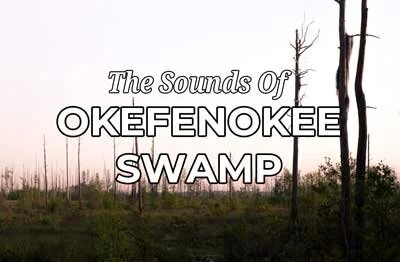Recording The Sandwich Wilderness: White Mountains National Forest
Discover what the White Mountains National Forest looks and sounds like during peak fall color!
During Mid-October, I headed for the White Mountains National Forest in New Hampshire to experience the beautiful sights and sounds that attract many to this region during this time of year.
My two-night stay yielded many great recordings including a lone coyote, crickets, and wind and rain ambiences. I also captured the landscape in photographs and produced a short video about my trip.
Location
The Sandwich Wilderness is located in the south-eastern portion of the White Mountains National Forest. On the map above, I’ve pinned the Wonalancet River since it was the heart of my trip.
Each day, I hiked from the parking area directly up the Wonalancet River, jumping from rock to rock. As you’ll see in the video below, this ended up being a painful but worthwhile experience. Because I wasn’t on a trail, I was able to experience and capture parts of the Wonalancet largely unknown to the world.
Mount Whiteface is an extremely popular summit in this area so combined with the peak fall color, I anticipated lots of people traffic on the trails. To my surprise, I encountered few hikers and the parking area never reached full capacity.
Mount Whiteface is one of 5 peaks in this region that form a ridgeline encircling an old growth forest called “The Bowl.” When looking at the topographic map below, it’s easy to see how it got this name.
My intention was to record The Bowl on this trip, but my injury prevented me from doing so. I will return to this area in the future to record The Bowl.
Behind The Sounds
The Behind The Sounds (BTS) video for this trip is available to my supporters on Patreon.
The BTS series is a resource for learning field recording techniques, advice, methodology, and gear selection and set up.
Each episode covers one recording expedition.
It takes a tremendous amount of time and effort to film these informative videos in the field and edit them in post production.
To watch this Behind The Sounds episode and the full series to date, consider becoming a Patreon. If you do, you’ll also receive my Field Recording For Beginners eBook and the opportunity to Zoom with me to ask questions, nerd out on gear, or receive critiques on your work.
Photography
Photography was one of my first creative passions and I still enjoy it today. Below are the highlights from this trip. Click on an image below to view a larger version.
For those interested, I shoot with a Nikon D800 and Nikkor 50mm f/1.8D.
Sounds
Tracks 1-3 were recorded with a Telinga Modular parabolic mic fitted with 2 EM272 capsules.
Tracks 4-10 were recorded with a SASS microphone drop rig.
Final Thoughts
As far as noise pollution goes, this was my most successful trip ever. Out of the 13 hours I recorded for, I ended up with over 6.5 hours of usable sound. That’s more than 50%! My usual, usable percentage is below 10%, so this figure is pretty incredible.
Although I wish it hadn’t rained during the night of my drop rig, I was rewarded with recordings of many different rain intensities and even a thunderstorm.
Out of all the sounds captured on this trip, my favorite is the lone, howling and barking coyote. The Telinga Modular really impressed me on that one as the coyote was over 250 meters away.
Support Acoustic Nature
If you enjoyed this post and would like to help support Acoustic Nature, please consider "buying me a coffee" or becoming a Patreon with the buttons below.
As a thank you for your support, Patreon supporters receive a copy of Field Recording For Beginners, exclusive access to the full Behind The Sounds video series, nature sound library downloads, and more.
If you are unable to support the site financially, please share this post with others, or leave a comment below letting me know you enjoyed this post! Both are free and help the website grow. Thank you ♫
Thanks for reading,
-Jared


























